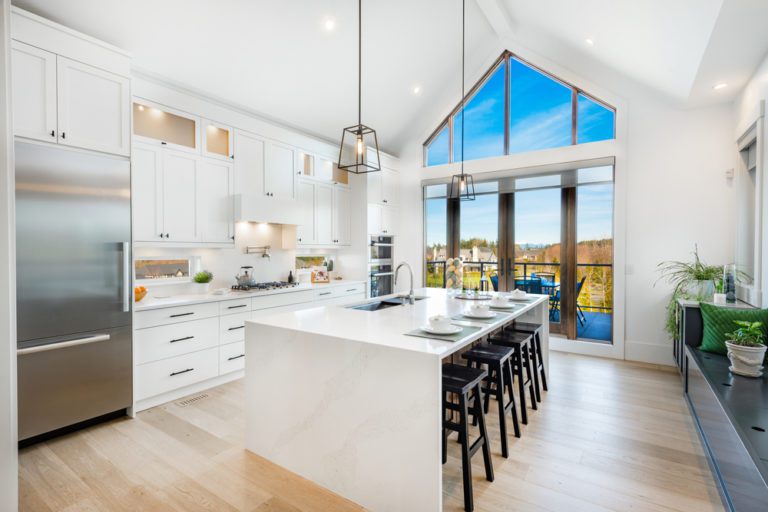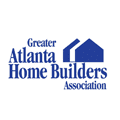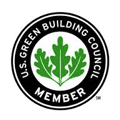
The LEED Bashers are out in force as a study of New York office buildings yields surprising results
In courting tenants over the last six years, 7 World Trade Center has trumpeted its gold LEED rating, an emblem of sound environmental citizenship.
On the other hand, two venerated show horses from the 1930s, the Chrysler Building and the Empire State Building, sailed to an 84 and an 80 as a result of extensive upgrades of their insulation and mechanical systems.
And the MetLife Building, a 1963 hulk looming over Grand Central Terminal? It scored 39. Still, solace is at hand for MetLife’s owners: the Seagram Building, Mies van der Rohe’s bronze-toned 1958 masterpiece on Park Avenue, posted a 3.
“I was probably as shocked as you are,” said Gerard V. Schumm, executive vice president of RFR Realty, which owns both the Seagram Building and Lever House, another glassed-in Park Avenue landmark. (It earned a 20.)
The Bloomberg administration has zeroed in on energy use by the city’s largest buildings with the goal of reducing greenhouse gas emissions, which contribute to global warmingand sea level rise.
In New York, the heating and cooling of buildings produces most of those emissions.Hurricane Sandy has underscored the urgency of such efforts, and continuing climate change is expected to result in more severe storms and flooding.
While the city’s biggest commercial structures have been required to report energy use since 2010, this is the first year public disclosure has been mandated under a 2009 law that is among the first in the country to follow how buildings use energy. Big residential buildings will face the same disclosure requirement next year.
City officials said explanations for the sharp discrepancies may not emerge until buildings began undergoing required energy audits and inspections of their heating, cooling and other systems in 2013. Still, the numbers already offer some insights into patterns of energy use.
For example, it is not necessarily older structures that pose the biggest energy challenge.
Older buildings tend to have higher Energy Star scores because they have thicker walls, fewer windows and less ventilation — superior “thermal envelopes,” as a report on the early results puts it. They are also less suited to energy-gobbling activities like computer data crunching, the downfall of some youthful but middling performers.
“Some scores will not be flattering, but identifying buildings with the most opportunity to improve is a big part of driving energy savings,” said Andrew C. Burr, a performance expert at the Institute for Market Transformation, a Washington advocacy organization promoting energy efficiency, which advised New York City on analyzing the results. “It does put energy on the radar of real estate consumers.”
The stakes are considerable. Unlike cities that depend heavily on automobiles, New York racks up most of its carbon dioxide emissions — nearly 80 percent — in heating and cooling buildings. Tracking this energy use is deemed crucial to meeting the city goal of cutting overall emissions by about a third by 2030, to slash costs and fight climate change.
New York’s largest buildings — just 2 percent of the roughly one million buildings in the city — account for 45 percent of the energy expended by the entire building stock.
Owners of more than 2,500 nonresidential structures disclosed energy use this year, but there were truants that did not submit their 2011 data by the required deadlines and thus face fines of $2,000 a year. The disclosure law exempts buildings in which more than 10 percent of the space is devoted to trading floors, data centers and other energy-intensive activities.
Yet work spaces that hum 24/7 seem nonetheless to have played into the results, including 7 World Trade Center’s score.
“Seventy-four is good, but I was initially surprised that three of our older buildings scored higher than 7 World Trade Center, and it had to do principally with tenancy,” said John Lieber, who oversees buildings at ground zero for Silverstein Properties. He noted that 7 World Trade Center’s tenants included firms like Moody’s, the financial rating agency.
The higher-efficiency-scoring properties he alluded to — 120 Wall Street, the Equitable Building at 120 Broadway and 570 Seventh Avenue — house nonprofit groups, modeling agencies and other tenants whose needs are of the basic light-switch variety, he said.
As for the less-than-stellar performance of some LEED buildings, it was not altogether unexpected.
For one thing, LEED, a program of the United States Green Building Council — the title is an acronym for Leadership in Energy and Environmental Design — evaluates buildings not just for energy efficiency but for the environmental soundness of their construction materials and their water systems and even proximity to public transportation.
And the Green Building Council itself has drawn criticism in the past for evaluating buildings before tenants moved in and not following up to see how they performed.
“It’s disappointing, but at the same time, it’s not surprising because there are so many things that could be happening,” Scot Horst, senior vice president for the LEED program at the Green Building Council, said of some scores.
He said energy waste could be linked to owners’ failing to set building controls to minimize the use of power, or to lax habits by occupants, like leaving lights or computers on when they are not in use.
The median score for commercial buildings that reported their data was 68, city officials said.
Missing from the ratings are some prominent commercial buildings that are not due for disclosure until 2013 because they have residential units or are classified as “commercial condominiums” for city tax purposes. Among these are The New York Times Building, at 620 Eighth Avenue in the Times Square district, and the Hearst Tower, on West 57th Street, another LEED building.
As for the Seagram Building’s very low score, Mr. Schumm said RFR was investing more than $12 million on general upgrades like motion sensors for lighting, new mechanical equipment, monitoring controls for elevators, and fans and water pumps that operate only when needed.
Still, the biggest drain could be the International-style landmark’s most lauded features. The Seagram’s single-pane glass curtain walls, far less efficient than treated or double-pane windows, and its luminous fluorescent ceilings work against energy conservation, he said.
Mr. Schumm said his company was exploring alternatives like applying an insulating film to the glass and switching more than 9,500 lighting tubes to more efficient LED lights.
Some property owners are also negotiating with tenants to retrofit entire floors or offices during a move or lease renewal to increase energy savings.
“Depending on your lease term, it’s a very wise investment,” said Greg Hale, director of efficiency finance for the Center for Market Innovation at the Natural Resources Defense Council, an environmental group. He said some buildings could lower energy use by as much as 30 to 40 percent.
But Mr. Schumm said there was only so much a landlord could ask of tenants who were paying top price — about $145 per square foot, in the Seagram Building. “How can you tell a partner in a law firm to turn off the lights at 6 o’clock when they’re working on a major case?” he said. “We can’t assume they’re wasting energy. They’re running their businesses.”
Original Here from NYT
What Makes a Building Green? You Sure Can’t Tell From It’s Energy Star Rating











